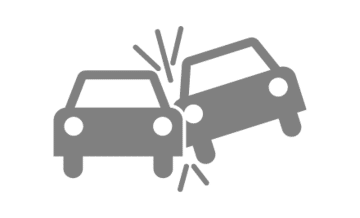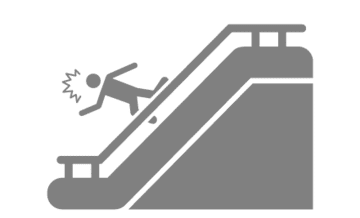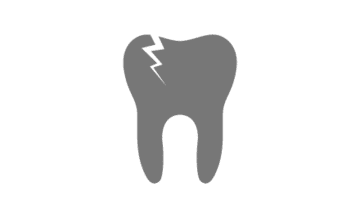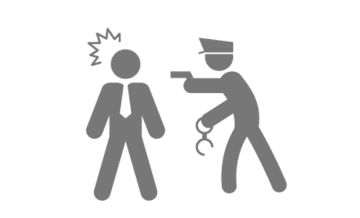Bulging and Herniated Discs can be caused by car accidents. The back trauma sustained in a car accident will often cause a herniated disc, also known as a slipped or ruptured disc.
Spinal injuries, like herniated discs and bulging discs, are frequently caused by car accidents, premises liability accidents, as well as other types of accidents. They are usually caused by forceful and sudden twisting or whipping of the spine. For the diagnosis & treatment of this kind of serious injury, you must see a car accident doctor who specialized in treating herniated disks
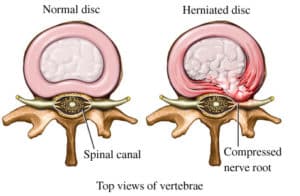
The Anatomy of a Healthy Neck and Back
There are 33 bones, or vertebrae, that make up the spine. The vertebrae are stacked one on top of the other, and support the neck and back. This is known as the vertebral column. Each vertebra is identified by location and number. The vertebrae of the neck are referred to as the cervical vertebrae, while those located in the low back are referred to as lumbar vertebrae.
The thoracic or dorsal vertebrae are located in between the cervical and lumbar vertebrae. Within each section, the individual bones are numbered. For example, the bones of the low back, or lumbar vertebrae, are known as L1, L2, L3, L4 and L5.
The bones of the spine are separated, and cushioned by intervertebral discs. These discs are composed of a soft gelatinous material called the nucleus pulposus which is surrounded by a tough fibrous outer ring called the annulus fibrosis. The intervertebral discs are identified by location. For example, your MRI may show that you have a disc injury to the L4-L5 disc. This means that your disc injury is between the fourth and fifth lumbar vertebrae of the low back.
Common Neck and Back Injuries Caused by Accidents
While you can fracture a bony vertebra itself in a car accident or other type of accident, more commonly it is the disc in between the two vertebrae that is damaged in an accident. Two common accident related injuries are bulging discs and herniated discs. A bulging disc can occur when the outer ring of the disc is stretched and bulges beyond the margins of the vertebrae.
A herniated disc occurs when the annulus fibrosis is torn and the gelatinous nucleus pulposus spills out. This can be extremely painful because the gelatinous material of the disc itself can put pressure on adjacent nerves. When this happens, a patient may experience radiating nerve pain down the extremity. This is called radiculopathy. Pain radiating down the arms and into the hands is usually associated with a disc injury in the neck or cervical spine.
Pain in the legs is usually associated with a disc injury in the low back or lumbar spine. In addition, the disc material itself can cause intense chemical irritation when it comes into contact with nearby nerves.
How Are Neck or Back Injuries Diagnosed With MRI?
Injuries to the spine are usually diagnosed by Magnetic Resonance Imaging (MRI). This diagnostic test uses a magnetic field and radio waves to produce detailed images of the inside of the body. MRI can provide information about the structure and function of organs and tissues, as well as detect abnormalities or diseases.
During an MRI, the patient lies on a table that slides into a large tube-like machine. The machine uses a strong magnetic field to align the protons in the patient’s body. Radio waves are then used to create signals that are detected by the machine and processed by a computer to create images of the body. The images can be viewed on a computer monitor or printed on film.
MRI is a noninvasive and painless procedure that is used to diagnose a wide range of conditions, such as brain and spinal cord injuries, tumors, joint injuries, and cardiovascular disease. MRI is especially useful for imaging soft tissues, such as the brain, spinal cord, muscles and detecting herniated discs and bulging discs.
Unlike X-rays and CT scans, MRI does not use ionizing radiation, which makes it safer for patients who need repeated imaging studies. In some cases, a contrast agent may be injected into the patient’s bloodstream to enhance the visibility of certain tissues or structures on the MRI images.
What Information Does an EMG / NCV provide?
Your doctor may also order Electromyography (EMG) and nerve conduction velocity (NCV) studies. These are diagnostic tests that help evaluate the functioning of nerves and muscles in the body.
EMG measures the electrical activity produced by muscle fibers when they are stimulated by motor neurons. During the test, small needles or electrodes are inserted into the muscle to measure its electrical activity at rest and during contraction. Abnormal EMG findings can indicate nerve or muscle damage or dysfunction.
NCV, on the other hand, measures the speed and strength of the electrical signals that travel along the nerves. The test involves applying small electrical shocks to the nerves and recording the response in the muscles. Abnormal NCV results can indicate nerve damage, such as compression or injury.
Both EMG and NCV tests are often done together to give a more complete picture of nerve and muscle function. These tests can be helpful in diagnosing a range of conditions, including carpal tunnel syndrome, peripheral neuropathy, myopathy, and radiculopathy associated with herniated discs.
EMG/NCV tests can help a patient in several ways. First, they can confirm or rule out the presence of nerve or muscle damage, which can be important for developing an effective treatment plan. Second, the tests can help identify the specific location and extent of the damage, which can guide treatment decisions. Third, EMG/NCV testing can be used to monitor the progression of nerve or muscle disorders over time, which can help inform long-term management strategies.
What Treatments Are Available for Disc Injuries?
There are several treatments available to manage a disc injury, including physical therapy, chiropractic treatment, and rest. Your doctor may recommend trigger point or epidural steroid injections, both of which are targeted methods to reduce swelling and pain. There are also many different types of surgical procedures that are available if your doctor determines that you need surgery. For example, during an operation called the Microendoscopic Discectomy, doctors create a small, minimally invasive incision that is used to remove a portion of the damaged disc.
In another operation called a Discectomy and Fusion surgery, the entire damaged disc is removed and replaced with a bone graft secured by metal and screws. More recently, doctors have been performing disc replacement surgery. In this procedure, surgeons replace the damaged disc with an artificial disc. As with any surgery, you should discuss all options with your surgeon, and pick the type of surgery that makes the most sense for your condition.
Lawyers24-7.com | Ask Questions – Get Answers
If you have any questions about the accident that caused your herniated or bulging discs, contact our experienced injury attorneys for more information by calling (800) 762-9300. You can also get started by simply filling out one of our case intake forms, and we will have one of our attorneys get right back to you.
You Might Also Be Interested In:

